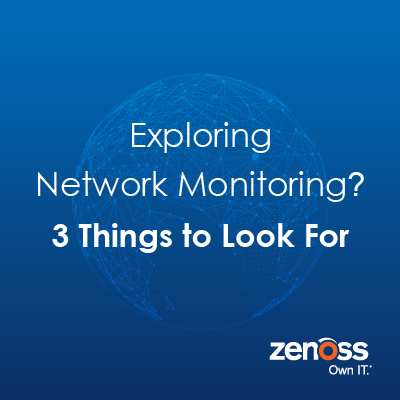
On a good day, these tools can help an administrator optimize her network environment for best performance or alert her when minor symptoms are threatening to create a problem. When network performance issues occur, modern monitoring tools use analytics capabilities to assess root cause, make recommendations for remediation, and (in some cases) integrate with other IT operations management (ITOM) tools to automatically take steps to resolve the issue.
But we are a long way from the simple token ring networks of 20 years ago, and IT infrastructure environments are no longer confined to a few workstations in an office or a few servers in a data center. They span multiple sites to support geographic, regulatory or disaster-recovery requirements. They serve users working (hopefully securely) from home or from the field using a vast variety of devices. They connect huge networks of increasingly smart and chatty IoT devices. And they increasingly leverage cloud-hosted resources in order to deploy applications quickly or scale them effortlessly when commanded.
Under these conditions, maintaining the right level of visibility into infrastructure, in context with the performance of the business services they support, is a key challenge for IT organizations. Solutions from some smaller vendors often only capture portions of the whole, and portfolios from larger vendors can overcompensate with too many point tools that are impossible to integrate, confusing to license, and difficult to use (if they are used at all). Greater levels of complexity in the data center have also led to haphazard misapplications of machine learning and AIOps technologies that promise to increase signal-to-noise ratios but generally only increase costs.
Here are three things IT Ops teams should look for when evaluating vendors for their network monitoring needs.
1. Scalable With SaaS
As IT environments become more complex and incorporate networks that span exponentially higher numbers of endpoints spanning both local, distributed and cloud-hosted infrastructure, leaders in this space are building SaaS platforms that incorporate cloud monitoring features to handle these increased levels of scale and network diversity. Modern SaaS platforms (like Zenoss) are architected to absorb and analyze nearly limitless amounts of data streaming from increasingly complex environments. They also offer the potential for more rapid iteration, in order to take advantage of emerging technologies and provide more useful UI and UX driven by user feedback.
2. Ready for Cloud
It’s also important to note that as workloads shift to the cloud, the requirement for insights into cloud networks overtake the need for insight into on-premises networks. Network monitoring tools that offer some of the most robust performance insights are typically appliances that can’t be deployed in networks not owned by the organization. So for organizations with cloud or hybrid environments, it’s important to understand what capabilities are available for cloud environments. This is commonly a greatly diminished set of functionality and should be understood by technology buyers.
3. Integrations for Efficiency
Integrations with other adjacent monitoring tools and ITOM solutions are also becoming increasingly important as IT practitioners look to increase their own efficiency. The right integrations can transform a solution from a point tool to a single source of truth for IT infrastructure health — automatically connecting knowledge of IT systems with the business services they provide and ensuring rapid collaboration across teams to predict, automate and accelerate the delivery of solutions before the business detects a problem.
While modern IT environments threaten to increase the blind spots IT Ops teams have in their infrastructure environments, making sure these three boxes are checked will go a long way toward building a solid foundation for continued service assurance. Visit us for more information on how Zenoss can eliminate blind spots for IT Ops teams.









